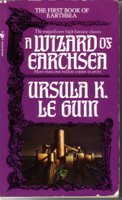A book, a miracle, and fate

Been reading The Milagro Beanfield War by John Nichols these past weeks. Read it once before. Or, more accurately, started reading it and stopped somewhere in the middle. A few characters’ names still sounded familiar, like those of Joe Mondragon, Amarante Cordova, and Ruby Archuleta. Though quite distant by now. This was the only trilogy that I read from the third volume down to the first. And not because I still haven’t bought the other books in the series. Already had the complete set of pocket-sized editions from my favorite secondhand bookshop before I began poring over The Nirvana Blues. And for no apparent reason. It’s just that intuitive side telling me that I should start there, at the end of this hilarious tale about common folks struggling against the rich and powerful.
Couldn’t recall anything now from The Nirvana Blues and The Magic Journey except that there were enough materials there to keep me going until the middle of the first book. The Milagro Beanfield War shared the same propensity for wild story-telling. The main plot started with Joe Mondragon’s revolutionary act of illegally tapping into the old Indian Creek and diverting it to his puny bean field in the small town of Milagro. But sprinkled along this main storyline are quite a load of interesting small town tales that could make up several episodes in a television series. There’s this mini-tale on the insane Cleofes Apodaca who drowned in the pit he kept digging to free his lost dog that he believed was trapped somewhere under the earth. There’s the story of old Amarante Cordova who for several years kept on calling his children for those final family gatherings before his supposed demise, but who just wouldn’t die.
Then there was young Herbie Goldfarb, draft-evader and community development volunteer, and his misadventures in that tension-filled season in Milagro. Couldn’t help recalling my own undergraduate fieldwork among poor rural folks here in Pinas. Those nights of finding our way through banana fields, soaking wet from the rain, dead drunk from all those shots of lambanog that the local farmers kept on offering to us. Got this new Owl Book edition of The Milagro Beanfield War, printed in 2000. Was in my room one day at my parents’ house. Saw my old copy of the book, with the black cover and the smiling skeleton figure of a Mexican revolutionary in front. Picked it up and thought of starting again with John Nichols’ trilogy. This time, with the first volume in the series. Days later, found the Owl Book edition with the author’s afterword written in 1993.
It was only during my third visit to the bookshop that I finally thought of buying my new copy of the first book in the New Mexico trilogy. Almost halfway through the book now. Been planning to go through that John Nichols autobiography after this, before I go through the next titles in the trilogy. It’s like being addicted to watching this television series called Northern Exposure back in the 90s (but that should be the topic for another blog entry). Now I’m finally starting to write some blog entries about the whole experience of reading the trilogy. And something at the back of this head tells me it’s destiny at work all over again.





